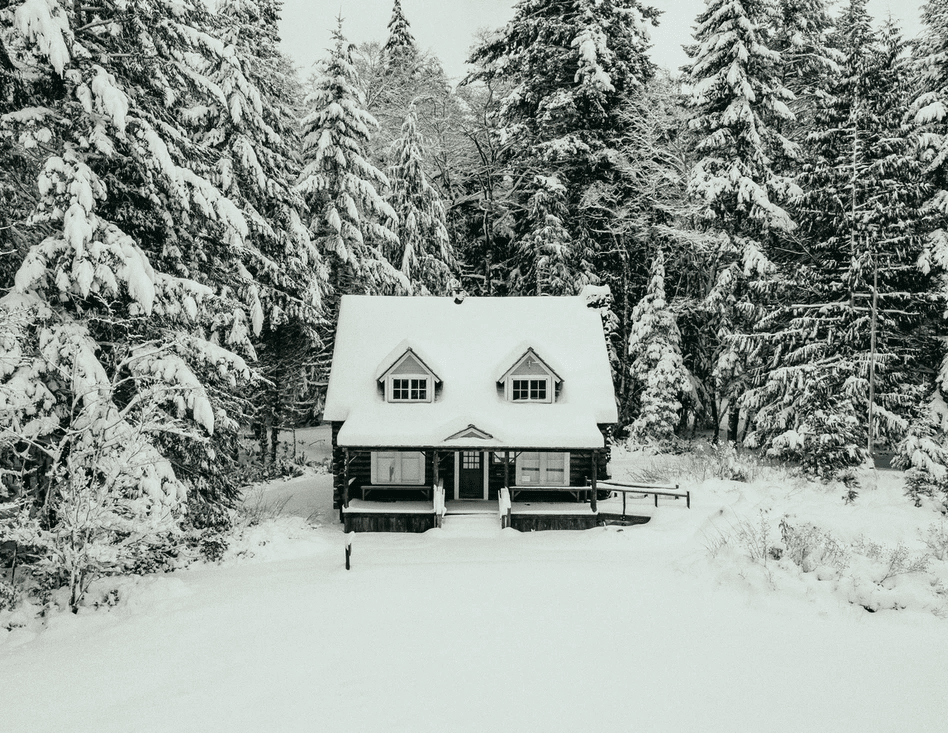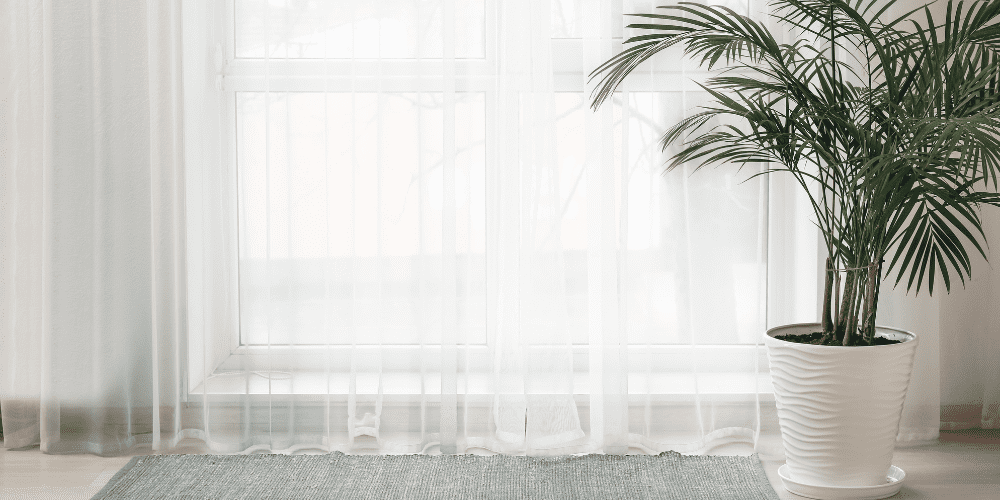Tips for Winterizing Your Connecticut Home
Weatherproofing is a necessary part of life. Just like you need a winter wardrobe, your house needs its own preparation for the cold months. Although the fall is the perfect time to focus on key projects to ensure your home stays warm, cozy, and efficient through the winter, you can remodel and winterize almost any time of the year.
In this blog, Sunwood has explained how to winterize your home. We’ve also shared tips for winterizing your home, a winter home maintenance checklist, and winter home safety tips. Then, when you ask yourself, "Who do I hire to winterize my home,?" after learning all this and more, keep us in mind. We’re experienced remodelers who have helped countless clients remodel their homes and winterize them to keep them safe and sound year-round!
Is Winterizing Your Connecticut Home Important?
Is it vital to winterize a home in Connecticut? The answer is yes if you enjoy less maintenance in the spring and a warmer home in the winter. Your home must be nice, warm, cozy, and energy-efficient to make the long winter easier and more enjoyable for you and your family. To ensure this is the case, you’ll need a winterizing house checklist to determine what needs to be remodeled to keep you and your family warm and safe.
Winterizing Saves You Money
Energy savings are a major benefit of winterizing your home. Adding storm windows is just one example of how winterizing can reduce costs—preventing drafts and holding in warmth translates to lower heating bills. Likewise, addressing minor maintenance issues before winter hits can prevent costly repairs, such as water damage from freezing or torn-off siding from strong winds.
Preventative Home Maintenance
Preventative home maintenance is important, especially before the winter, which is why now is the time to consider a remodel.
Seemingly minor issues, like a loose piece of siding, can lead to bigger problems during winter storms. A single loose board can turn into major damage if left unchecked, allowing water into your home and potentially compromising your roof.
That’s why it’s essential to inspect your home for minor issues now and take care of them before the cold weather sets in. It’s also a good idea to contact a contractor for expert repairs, especially for tasks requiring specific skills, like siding work.
Winterizing Water Sources
Keep in mind that water is the biggest cause of damage to a house. In the winter, any leaking moisture can lead to freezing, which expands and can cause foundations to crack and driveways to crumble.
But don’t despair—your leaking problem can be fixed by caulking or a quick fix by a professional remodeler if it is done before winter weather hits. You should also consider winterizing outdoor faucets.
In addition, inspect the exterior of your house for crevice cracks or exposed entry points around the pipes and seal these, too. You can also speak with us at Sunwood about protecting pipes in winter. We have a few handy tips to share!
Do You Need a Contractor to Properly Winterize Your Connecticut Home?
Most people know that winterizing their house is essential. However, hiring a professional can also be expensive. So, is it necessary to hire someone?
The answer is yes and no. Some winterizing tasks are possible and sensible to complete on a single weekend, but hiring someone who knows exactly what they’re doing is necessary for others.
How to Winterize Your Connecticut Home Yourself
Here are some tips to get your home ready for the thrills and chills of winter—and actually come out ahead on your heating bills:
1. Lower your water heater temperature
Consider lowering the temperature of your water heater from the usual 140 degrees to around 120 degrees. This will help you save on energy costs during the winter.
2. Clean the Gutters
Ensure that your gutters are securely fastened to the roof with no looseness. Check around for cracks, rot, holes, or exposed water pipes. If you have any concerns, call a professional because drainage is a serious issue and should not be handled by the casual weekend do-it-yourselfer.
3. Seal up the Woodwork
This includes windows, doors, patios, and thresholds. Sealing these areas is crucial to prevent dry rot, leakage, and moisture from damaging the woodwork around your home. It also reduces draftiness during winter, saves you on heating bills, and keeps holes plugged to keep out potential pests or rodents that may try to take up shelter in your home during the winter.
4. Trimming Trees
We’re not just talking about the Christmas tree here; the trees outside can become unruly and cause hazards over the winter when ice collects on them. Branches become heavy with snow, ice, and debris and can crack and fall onto your roof, car, windows, or driveway, causing damage and costly repairs.
5. Stock the Pantry for Emergencies
You probably remember the most recent ice or snowstorm that caused you to lose power. It will happen again during one winter or another.
So, stock up on groceries. Having water and pantry items on hand will save you from being tempted to drive through dangerous conditions to a probably closed grocery store for the essentials. However, remember to be conscious of what you buy when you purchase groceries. You’ll want to avoid freezer items to prevent you from losing money when it goes to waste.
What to Hire Someone For When Winterizing Your Home
When looking at how to winterize a home, you’ve likely come to the conclusion that some tasks just might be too dangerous or complicated for you to do yourself. This is when you should hire a professional. However, we've got you covered if you’re unsure which situations call for a remodeler. Have a look below to learn when to hire someone for home winterization.
1. Inspections of the HVAC
You’ll want to ask a professional to inspect the furnace, heating ducts, and system. Up to 60 percent of heated air can escape from the ducts before reaching the vents that go into your house, so fixing this is a huge money saver.
During an inspection, the professional will likely clean out and replace the air filters, ensure proper operation of blowers, clean out motors and fans, double-check the gas pipes leading to the furnace, and double-check for carbon monoxide.
2. Sealing up Drafts and Air Leaks
The Department of Energy reports that drafts can waste up to 30 percent of your home's energy usage. You can perform checks for drafts and air leaks, but this is something better left to a professional. Otherwise, you’re stuck using rolled-up towels underneath doorways and caulking all the windows yourself, which you don't want to do in the winter when it’s freezing cold.
3. Have your Chimney Inspected
You need to get your chimney swept, and you’ll want to call a certified chimney sweeper. Yes, these are real people, not only characters from Charles Dickens's stories. An accredited professional will ensure your flue is in good shape and remove any flammable items or obstructions inside your chimney that could cause issues when you use it in the winter.
4. Insulating your Pipes
When it comes to pipe insulation, you don’t want to mess around. We recommend you call a professional to have your pipes wrapped in foam, which will protect them from the cold, just like wearing a coat does for people.
A professional will know the length, amount of foam, and type to use for your pipes. The process will keep your pipes from freezing and help hot water stay hotter, so you will use less energy over the winter when heating water in your home.
5. Add Insulation
Your home is your barrier against the cold, but when the insulation isn’t sufficient, problems occur. That’s why, whether you’re planning a remodel, you’ll want to boost insulation in three essential home areas: between the walls, the attic floor, and the basement ceiling.
If you’re unsure about your home's proper insulation levels, many professional contractors will visit your home for free and provide a quote on properly insulating it.
6. Install Storm Doors and Windows
When the cold, wintry winds start to blow, you’ll be glad you took these measures, which can reduce your energy costs by up to 45%. Winterize sliding doors, and you’ll stay nice and toasty all winter. However, we recommend winterizing the windows and doors during your remodel to save you time and money later on down the line.
7. Reinforce or Redo the Roof
Your roof is your home’s first line of defense against the elements, enduring everything from rain and snow to harsh sunlight. Year-round, it’s essential to clear away debris like leaves that accumulate on your roof. This allows you to inspect for loose shingles, exposed nails, or any holes that need patching.
If you spot issues, consider hiring a professional contractor to handle the repairs. Attempting DIY roof fixes can lead to costly mistakes, especially during winter. Picture trying to fix your roof during a snowstorm! It’s much safer and more efficient to get things taken care of now.
Speak With Sunwood Today About Winterizing Your Connecticut Home
Now you know more about when you can winterize your home and when a professional is your best bet. Although we might be biased, we recommend winterizing your home during a remodel. At Sunwood, we can help you winterize your house and ensure you are warm and safe during the winter. So, if you’ve been considering a remodel, now might be the time to contact us!

.png)


.png?width=150&height=150&name=Blog%20Header%20Template%20(2).png)
.jpg?width=150&height=150&name=Blog%20Header%20Template%20(2).jpg)
.jpg)
-1.png)
